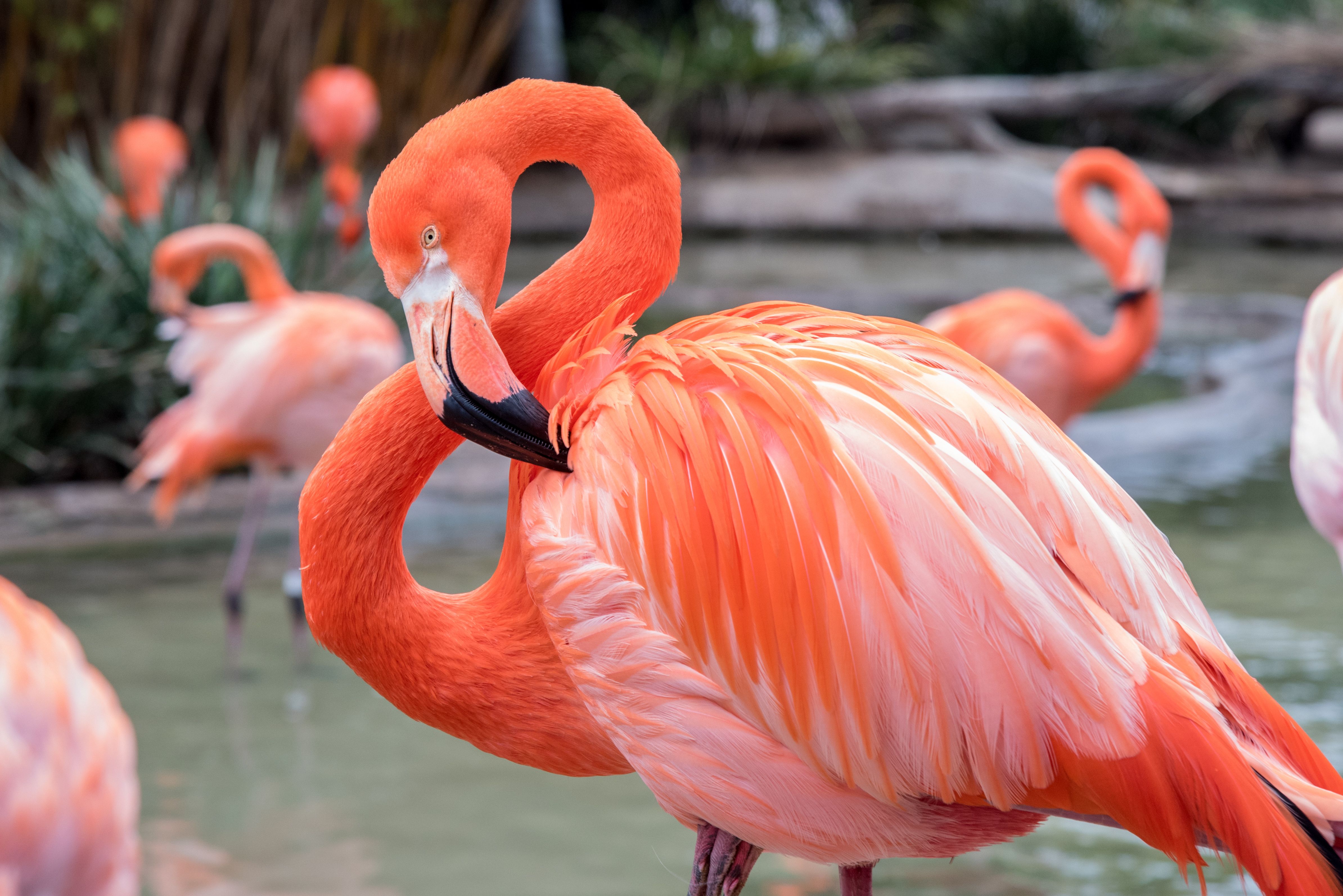Target Analysis of PFAS in Bird Eggs and Blood Performed With UHPLC–QTOF-MS
The eggs of the yellow-legged gull and Audouin’s gull and the blood of the greater flamingo were studied to assess their exposure to perfluoroalkyl substances (PFAS) as bioindicators of chemical pollution.
With liquid chromatography coupled to high-resolution mass spectrometry (LC–HRMS) already a prevalent method for the determination of perfluoroalkyl substances (PFAS) in the environment, a new study has made improvements upon the process by coupling ultrahigh-pressure liquid chromatography (UHPLC) to a quadrupole time-of-flight mass spectrometer (QTOF-MS).
Flamingo with head and neck curved into a figure 8 | Image Credit: © The Speedy Butterfly - stock.adobe.com

The study based out of the Department of Environmental Chemistry at Jordi Girona in Barcelona, Spain, and published in the Journal of Chromatography A, performed targeted and untargeted analysis of PFAS in the eggs of Larus michahellis, the yellow-legged gull, and Larus audouinii, Audouin’s gull, as well as the blood of Phoenicopterus roseus, the greater flamingo.
By conducting targeted and untargeted analysis with UHPLC–QTOF-MS, the researchers sought to increase the scope of PFAS identification, better assess contaminant exposure, and make a case for birds as biomarkers for chemical pollution.
PFAS, which actually mean both per- and polyfluoroalkyl substances, are a class of thousands of synthetic chemicals used in a wide variety of applications, from food processing to household products to electronics, textiles, and transportation. But they are extremely resistant to degradation, and even though the European Environmental Agency and others have classified them as toxic compounds, their full behavior in and impact on the environment is still not close to being fully known.
Previous LC–QTOF-MS studies, according to this research, have identified and quantified PFAS in fish from Lake Ontario, China, and Switzerland, soil in New Jersey, and surface waters and birds across Europe. The three bird species in this study, all found in the Ebro Delta along the southern part of the Catalonia region of Spain, are known to have been exposed to PFAS at relevant concentrations.
In this case, UHPLC–QTOF-MS with a full-scan data-independent acquisition (DIA) at 6 and 30 eV screened 25 PFAS, and investigated the presence of other untargeted PFAS. In the gull eggs, PFBA, PFHxA, PFNA, PFOS, PFDA, PFUdA, PFDoA, PFTrDA, and PFTeDA were quantified between 0.45 and 55.2 ng/g w/w. In the flamingo blood, PFHpA, PFHxS, PFOA, PFHpS, PFNA, PFOS, PFDA, FOSA, PFUdA, PFDoA, and PFTrDA were quantified between 0.75 and 125 ng/mL. All of those concentrations indicated chronic exposure to the contaminants.
Additionally, two new compounds were found in the bird species: perfluoro-p-ethylcyclohexylsulfonic acid (PFECHS) in the flamingo blood and 2-(perfluorohexyl)ethanol (FTOH) in all three species. PFECHS is known to be a PFAS substituent, and FTOH has been reported to be a main PFAS precursor. Ten other compounds were tentatively identified, but either their diagnostic or characteristic ions were not found.
It is not only the increased capacity of PFAS that can be detected, but also the ability to identify those substituents and precursors, that makes UHPLC–QTOF-MS a viable option for assessing exposure to these chemicals, and specifically, their risk to birds.
Reference
(1) Oró-Nolla, B.; Dulsat-Masvidal, M.; Bertolero, A.; Lopez-Antia, A.; Lacorte, S. Target and untargeted screening of perfluoroalkyl substances in biota using liquid chromatography coupled to quadrupole time of flight mass spectrometry. J. Chromatogr. A 2023, 1701, 464066. DOI: 10.1016/j.chroma.2023.464066
Advances in Non-Targeted Analysis for PFAS in Environmental Matrices
March 27th 2025David Megson from Manchester Metropolitan University in Manchester, UK, spoke to LCGC International about the latest developments in non-targeted analysis (NTA) of per- and polyfluoroalkyl substances (PFAS) in environmental matrices based on a recent systematic review paper he has collaboratively published (1).
Study Explores Thin-Film Extraction of Biogenic Amines via HPLC-MS/MS
March 27th 2025Scientists from Tabriz University and the University of Tabriz explored cellulose acetate-UiO-66-COOH as an affordable coating sorbent for thin film extraction of biogenic amines from cheese and alcohol-free beverages using HPLC-MS/MS.
Quantifying Microplastics in Meconium Samples Using Pyrolysis–GC-MS
March 26th 2025Using pyrolysis-gas chromatography and mass spectrometry, scientists from Fudan University and the Putuo District Center for Disease Control and Prevention detected and quantified microplastics in newborn stool samples.
Multi-Step Preparative LC–MS Workflow for Peptide Purification
March 21st 2025This article introduces a multi-step preparative purification workflow for synthetic peptides using liquid chromatography–mass spectrometry (LC–MS). The process involves optimizing separation conditions, scaling-up, fractionating, and confirming purity and recovery, using a single LC–MS system. High purity and recovery rates for synthetic peptides such as parathormone (PTH) are achieved. The method allows efficient purification and accurate confirmation of peptide synthesis and is suitable for handling complex preparative purification tasks.







